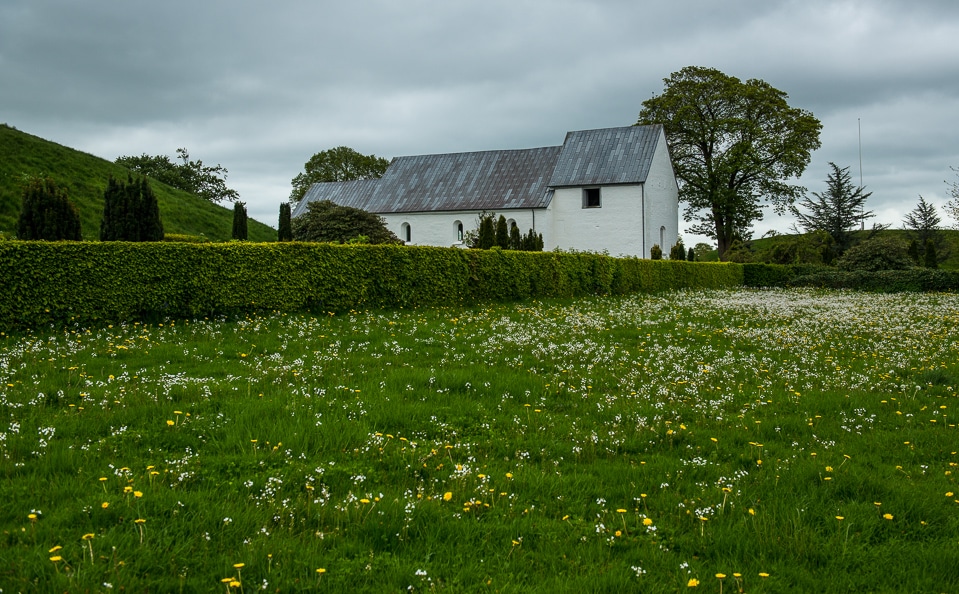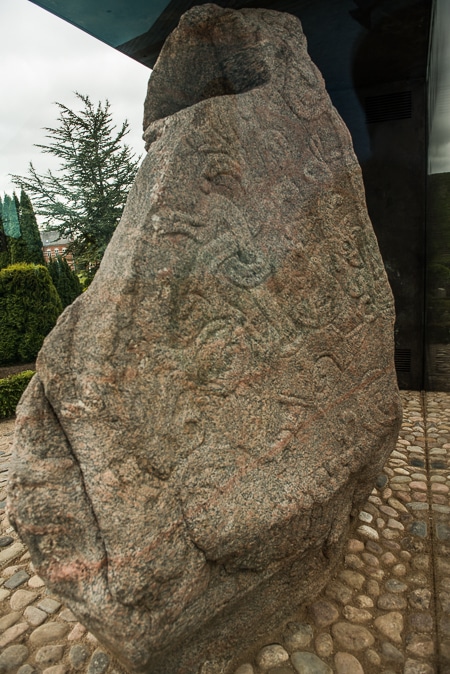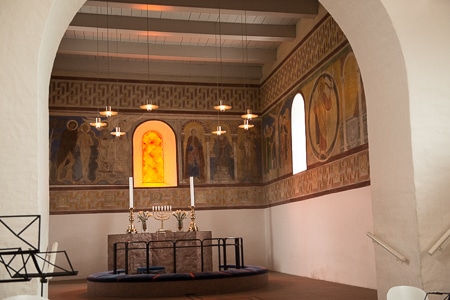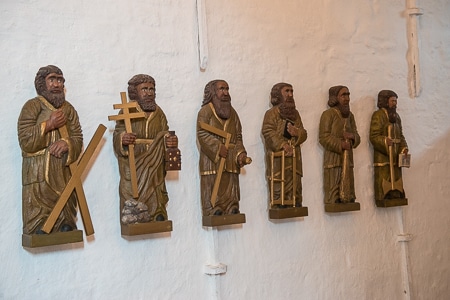
The burial mounds, rune stones and church at Jelling, Denmark make up another Unesco World Heritage site that takes some concentration and research to come up with the love that so many other Unesco sites engender without effort.

The mounds, well, are mounds of dirt. And even if you know there are some kings and queens from a thousand years ago buried in there somewhere, grassy mounds of dirt they remain. It would help a lot if there were some sort of interpretive center there, with some archeological narrative. I think they're working on it, but from the looks of the building off to the side of the place, it's a way off.
The rune stones are interesting, of course, but they've worn in the harsh Danish weather for a thousand years, and so are hard to view with any sense of what they originally looked like. They've now been encased in glass, so you can't even get a very close look. And many looks you can get are foiled by reflections.
Some posts on Travel Past 50 may contain affiliate links. If you buy something through one of those links, we may earn a small commission. As an Amazon associate, we earn from qualifying purchases.
The church, originally built about 1000 years ago, is now the whitewashed nondescript country church that the northern Lutherans seem to favor. From the looks of it, it could have been built in the late 19th Century and painted white every year since. Not much is left of what might have distinguished it before. Some old carvings on one wall, and some frescoes of indeterminate age are the only decoration. Again, a little didactic help would be appreciated, but, alas, is unavailable.
The church, btw, is still in use. We got there just as a service was ending. It's surrounded by a modern graveyard, which is the best kept graveyard I've ever seen. It features extensive, artful, landscaping, and seems to be manicured by a full time staff, a few of whom we saw puttering around the various graves as we walked the site.
If you're interested, here is some more info from Unesco about the site.


The Jelling Mounds, Runic Stones and Church are a UNESCO World Heritage site in Denmark. Click the link to see a list of all UNESCO sites in Denmark, with links to all the sites we have visited.

Tom, It sounds like you were less than impressed. We went here last summer and it was a gorgeous day. There was a slight breeze and we had such a fantastic time walking around. We loved the stones, even though there was some reflection for sure. The church was a bit underwhelming, but in a way, I liked it that way as well. I chuckled at your write up!
The site itself was nice. But, in reality, I was most impressed with the care given the modern graveyard. That’s some first class landscaping. What is missing from the site is some interpretive center that would explain what you’re looking at. Honestly, my knowledge of Danish history is non-existent, and some rudimentary displays of what went on here and why this is important would be a good idea. They are building such a thing, I think, across the street from the site. At least that’s what I gleaned from the construction signs.